100 years of Memorial Court
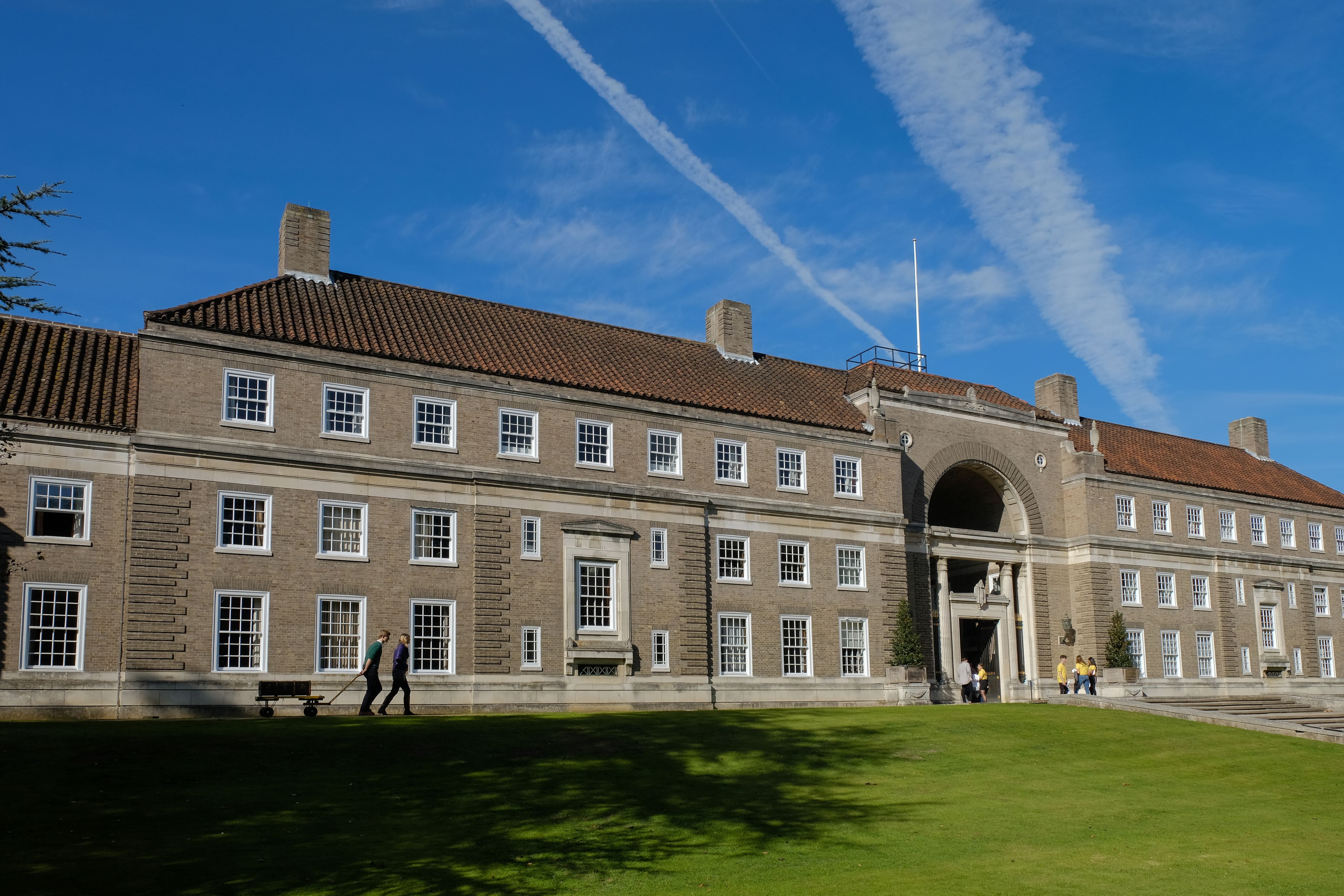
For the majority of Clare’s first-year students, Memorial Court is home. It’s where many make lifelong friendships and take their first steps away from home. How much do they think about the history of this iconic site, the development over the years, and the people who have gone before?
As the College marks 100 years of Memorial Court, Clare News took the opportunity to explore the Archives and find out more about the history of the site – and the opening ceremony of 1924, which has shaped our plans for Remembrance Sunday this year.
After the First World War, high priority was given to providing additional undergraduate accommodation to release the pressure of a growing college on Old Court. Clare’s rapid expansion necessitated new buildings. In March 1922, a tender by Coulson and Son was accepted by the College Council for the construction of a new building, designed by architect Sir Giles Gilbert Scott, to be located to the west of Queen’s Road in what was then the Fellows’ Garden.
Sir Giles Gilbert Scott was a British architect known for his work on the New Bodleian Library, Cambridge University Library, Battersea Power Station, Liverpool Cathedral, and designing the iconic red telephone box.
Clare’s new court was constructed on land which had been acquired in the nineteenth century, and was conceived specifically as a memorial to the Clare men who had lost their lives in the First World War.
The first phase included the principal façade, the east range, and the monumental memorial arch which forms the entrance to the court, pierced to accommodate a large bell. Under this archway, the names of the Clare men who died in both twentieth-century world wars are inscribed.
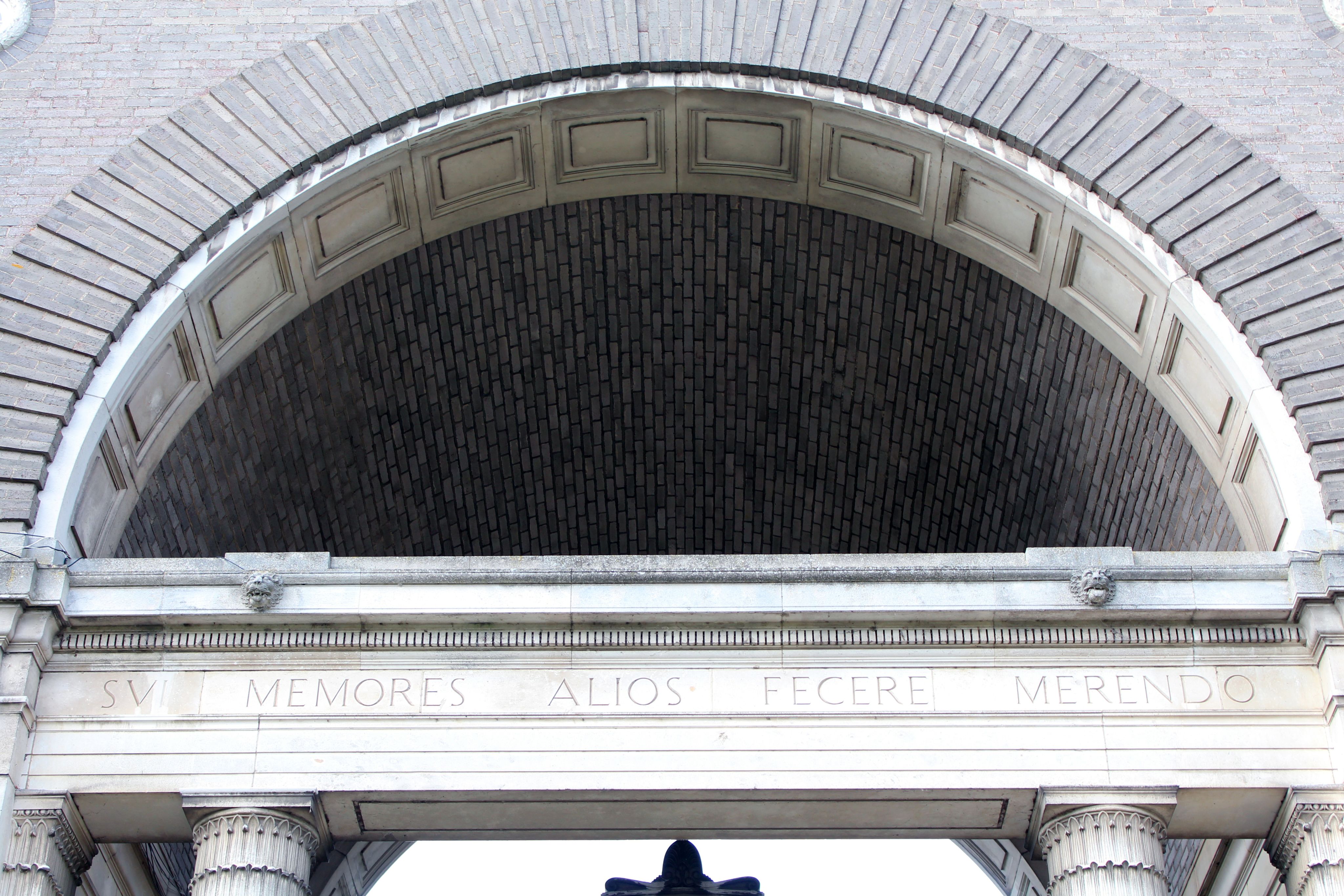
The inscription above the archway reads ‘SUI MEMORES ALIOS FECERE MERENDO’ and is taken from Vergil’s Aeneid, Book Six, Line 664. It translates as ‘They made others mindful of themselves by earning it’ or, perhaps better, ‘Those who proved themselves worthy of remembrance’.
There are other inscriptions in Memorial Court, that testify to the sacrifice of a generation, not least the poignant tribute to Wilfrid Saxby Barham in M staircase.
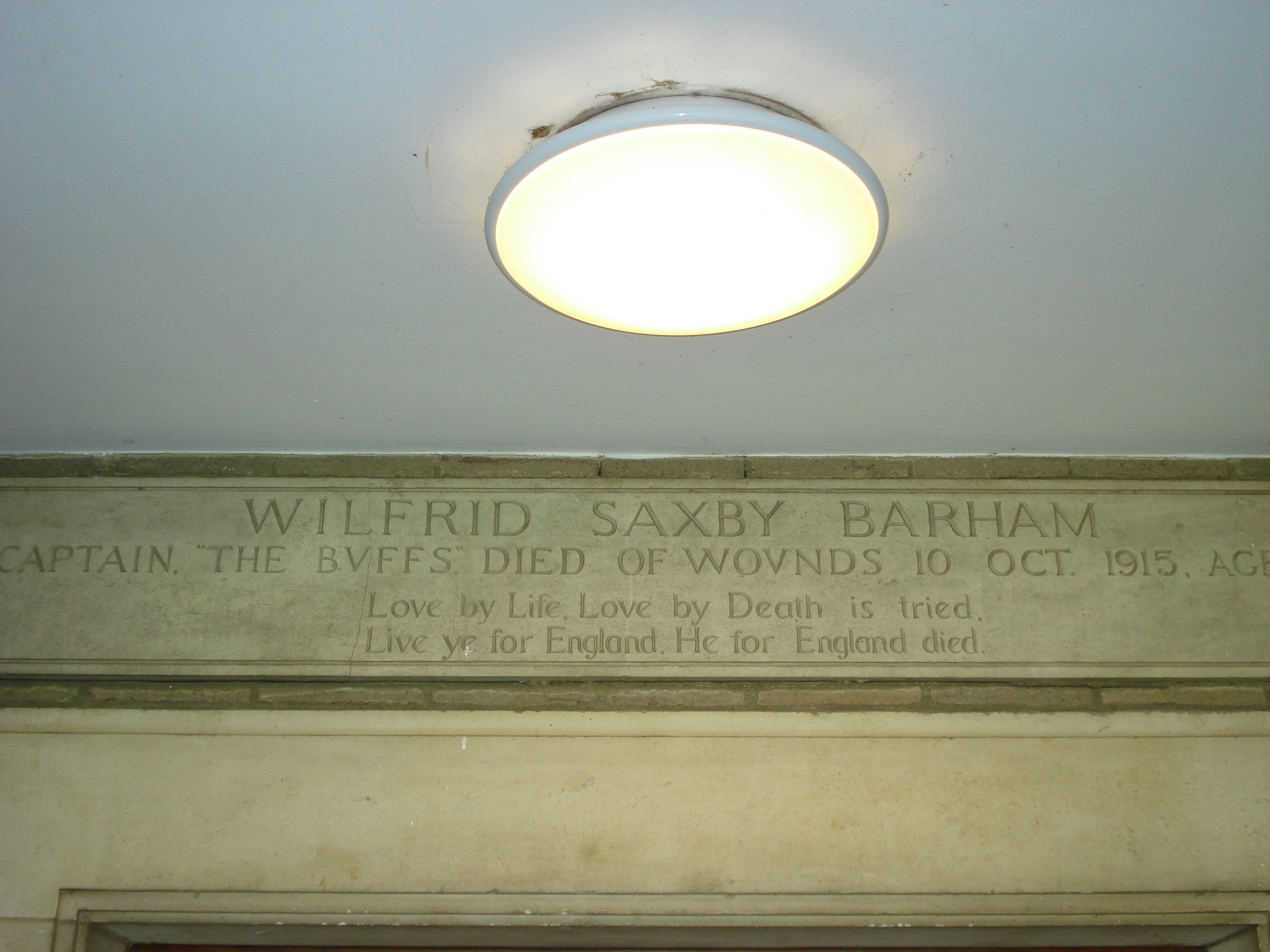
In the presence of William Mollinson (Master 1915–1929), Memorial Court was opened by the then Chancellor of the University, Lord Balfour, on Armistice Day 1924.
The congregation convened on the steps of Memorial Court, with current members of College standing in close formation on either side of the arch. A formal ceremony followed, including the Antiphon, prayers and a 2-minute silence, before the building was officially declared open.
In 1927, the Council approved an extension to Memorial Court. Plans put forward by Scott had envisaged extensions which would add 74 sets and make it possible for the College to house two-thirds of undergraduates in its two courts. In a deliberate departure from earlier collegiate architecture, Scott designed staircases with wide, fan-shaped landings on each floor, with enough room to house at least four sets of rooms, bathrooms and gyps. The building was completed in 1934.
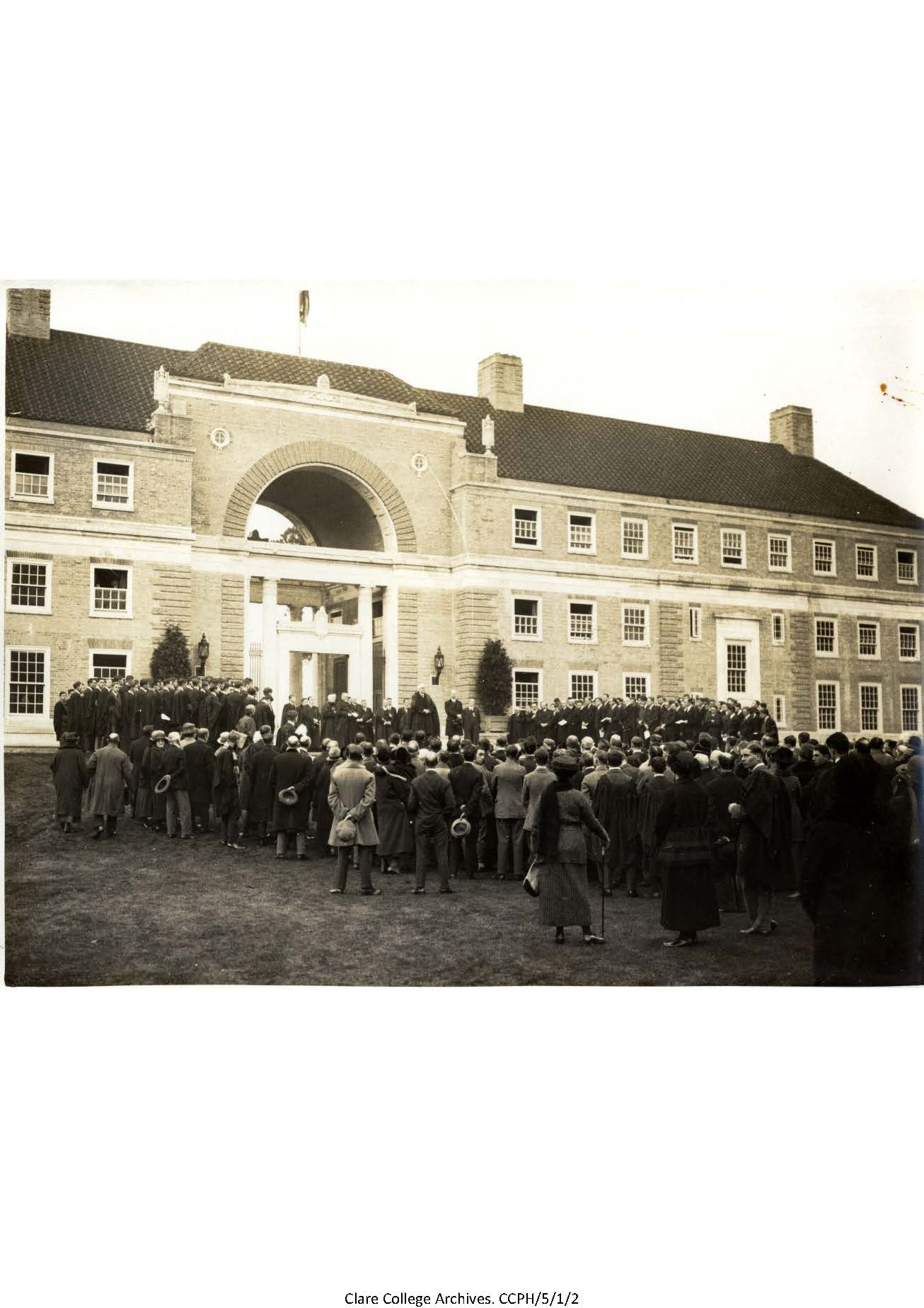
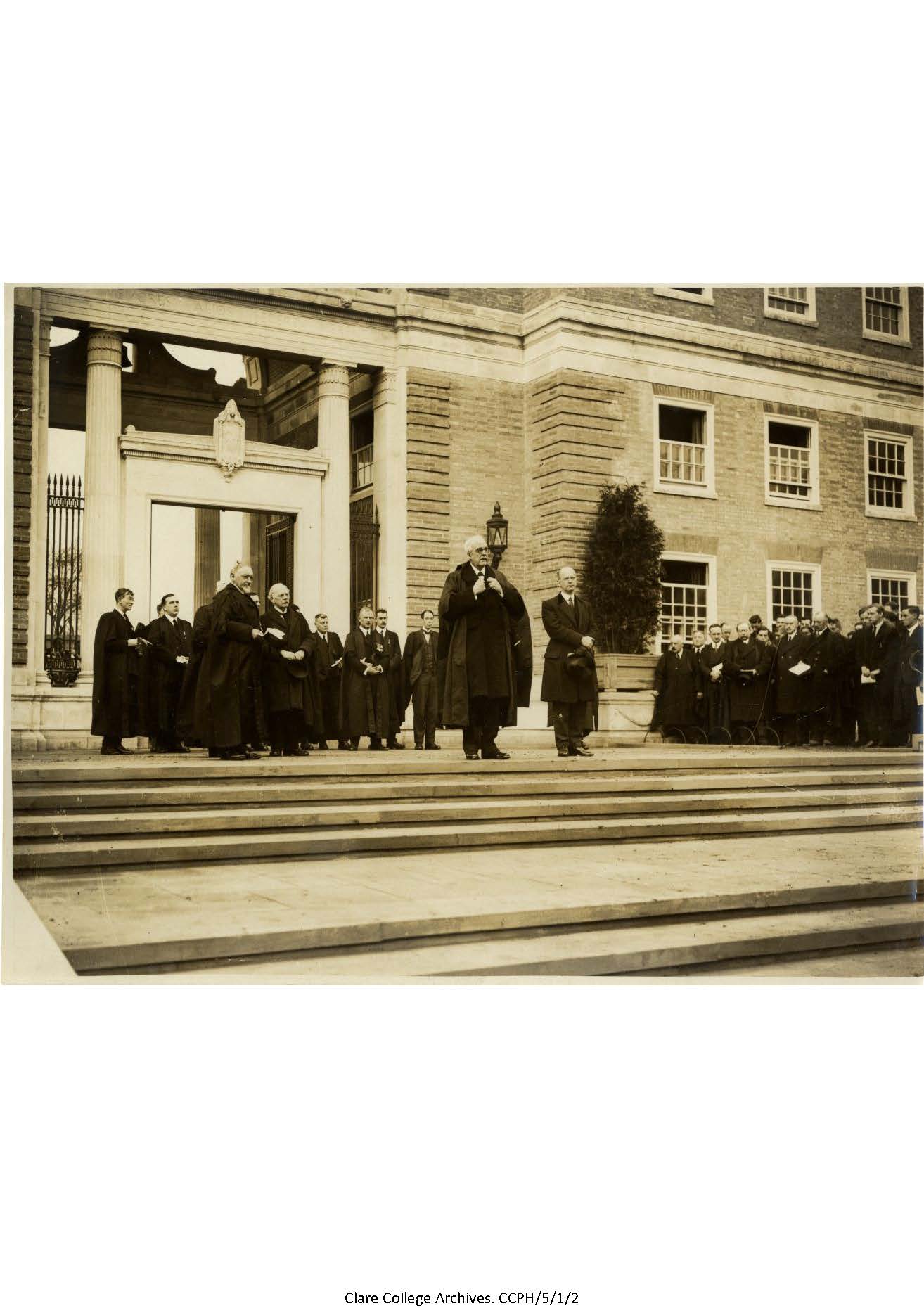
Memorial Court was further extended in the 1950s by the construction of Thirkill Court (intended as a memorial to the dead of World War Two), and was later divided into two parts when the Forbes Mellon Library was constructed in the centre; the new courtyard created in the west was renamed Ashby Court after Eric Ashby (Master 1959–1975 ). In keeping with the theme of remembrance, Henry Moore’s poignant sculpture, Falling Warrior, now rests in the front part of Memorial Court, surrounded by a meadow of wildflowers.

Today, Memorial Court is home to first-year students, a thriving
College Library, staff and Fellows’ offices, and supervision rooms.
To commemorate the centenary of this iconic building, the College will be recreating the 1924 Remembrance Day service on Remembrance Sunday 2024 (10 November). Once again, the congregation will assemble on the steps under the archway to pay its respects to members of Clare killed in the First World War and subsequent wars and conflicts. The Choir will then lead a procession from Memorial Court, along the Avenue and into Old Court, where the service will conclude in the Chapel.

Alumni are most welcome to return to College to participate in this poignant event.

